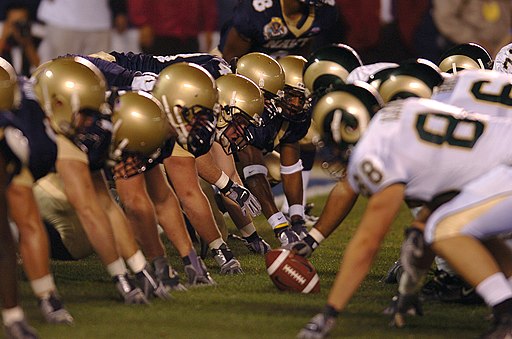The leading cause of brain damage in sports such as football is concussion, but researchers at Cleveland Clinic and the University of Rochester found that even in the absence of concussion, football players still suffer from long-term brain changes. Their study is published in the March issue of PLOS ONE.
In a previous study, investigators from the National Institute for Occupational Safety and Health in Cincinnati reported that football players’ head injuries probably contribute towards their higher-than-normal risk of developing neurodegenerative diseases, such as Parkinson’s and Alzheimer’s. They published their findings in the journal Neurology (September 2012 issue).
This latest study involved a total of 67 football players. The researchers noticed that following hits to the head, the levels of a particular protein in the brain went up. They also found that even though none of the players suffered from concussion, four of them showed signs of brain disorder in their autoimmune response.
According to the leader of the study, Damir Janigro, Ph D, director of cerebrovascular research in Cleveland Clinic’s Lerner Research Institute:
“Much attention is being paid to concussions among football players and the big hits that cause them, but this research shows that more common, ‘sub-concussive’ hits appear to cause damage too.”
The researchers assessed the number of head hits the players had as well as whether there had been any brain injury, by conducting brain scans and tests that measured their reaction time, motor control, memory and balance.
They took blood from 57 of the players before and after football games to see whether there was any trace of the protein S100B in their blood – pre-season baseline levels of S100B had been measured in 27 players.
Usually, the protein is found only in the brain, meaning that if there’s a trace of it in the blood the blood-brain barrier has been damaged. S100B is commonly used to diagnose brain injury when there aren’t that many symptoms showing.
When there is a trace of the protein in the blood, the body produces an autoimmune response, releasing antibodies that eventually make their way into the brain – damaging brain tissue which can lead to long-term brain damage.

About 40% of football players are thought to experience concussion each year
Out of the 27 players who had pre-season S100b blood levels measured, four showed signs of an autoimmune response to the protein. Brain tissue damage was confirmed in the players through a series of brain scans.
Janigro said:
“Think of the blood-brain barrier disruption as opening a door to the brain that shouldn’t be open. Proteins like S100B that normally stay inside the brain get out where they aren’t supposed to be and get attacked. In addition, the door is open for things that don’t belong in the brain to get in.”
Concussions – which around 40 percent of football players experience each year – are sometimes difficult to diagnose. The S100B blood test is a great indicator of whether or not a player has experienced head trauma and reveals the severity of the hit as well.
In addition, the blood test is a great deal less expensive (around $40) than other means of evaluating the extent of head trauma – such as CAT scans.
Another concussion test was recently developed by scientists at the University of Mississippi Medical Center; not only can the test determine whether a concussion has occurred, but it also indicates when it will be safe for the athlete to play again.
Written by Joseph Nordqvist